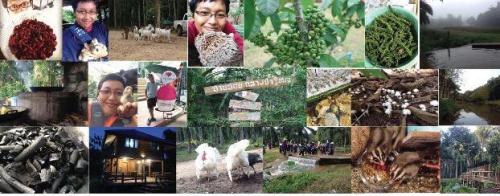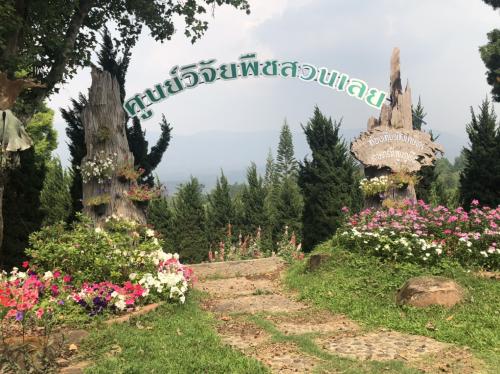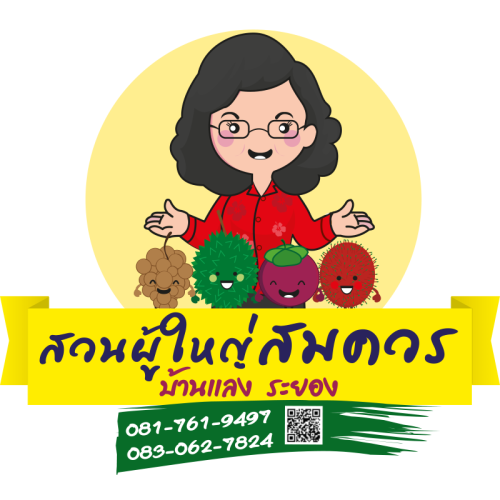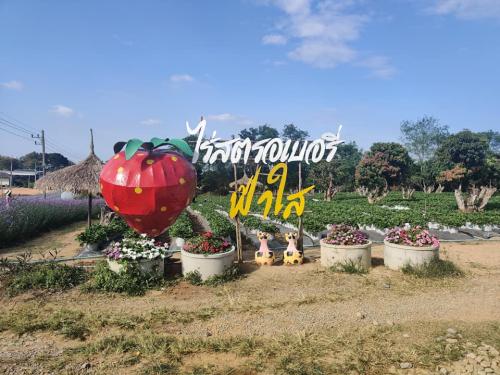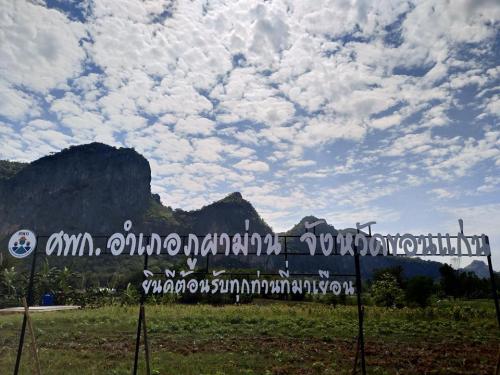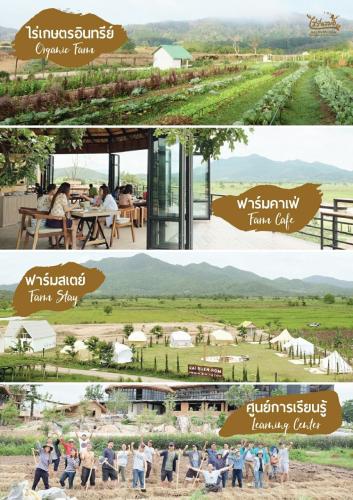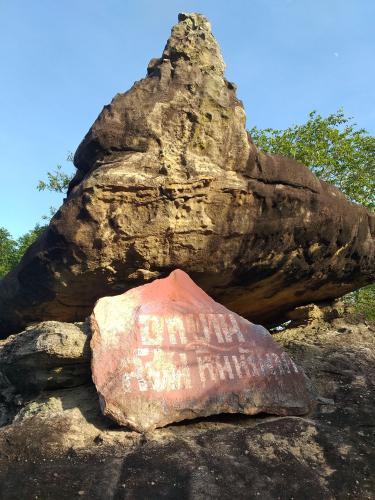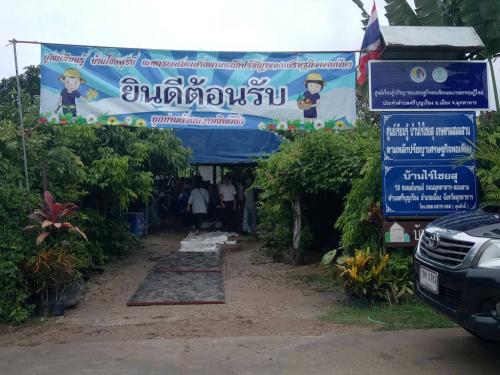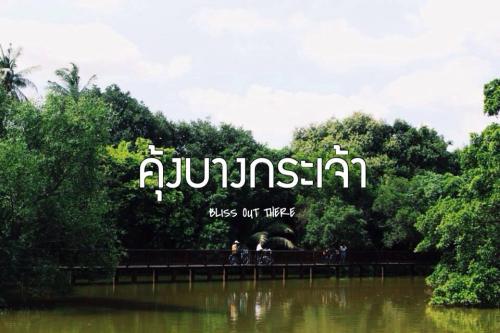Weather

Closed
Business hours
• Sunday
: 09:00 - 16:00
• Monday
: 09:00 - 16:00
• Tuesday
: 09:00 - 16:00
• Wednesday
: 09:00 - 16:00
• Thursday
: 09:00 - 16:00
• Friday
: 09:00 - 16:00
• Saturday
: 09:00 - 16:00
Note
: -
Map
Review Score
0
Information
It is an eco-tourism attraction with non-toxic vegetables, flowering plants
Source
Thailand Tourism Directory
Recommended
Entrance fees
• Entrance fees: Non-fee
• Remark : -
Review (0)
Write Review
0
จาก 5.0
Availability
Value
Service
Relate Agritourism
Little House in the Big Wood is a learning center of sufficiency economy philosophy. It was established by the new generation of agriculturists who would like to inherit sufficient agriculture. By applying a house and garden as the learning center for visitors.
Chumphon
In the past, the Phu Ruea High Altitude Agricultural Experiment Station was to test the winter fruit varieties for planting in the northeastern highlands, including apple cultivars. and peach varieties for eating fresh In addition, Phu Ruea High Land Agricultural Experiment Station has also made efforts to collect and study grape varieties for making wine, including grapes for eating fresh, to develop varieties and encourage farmers in Loei Province to continue planting.
Loei
The garden is adjacent to the irrigation canal which cause a cool wind blowing all the time. Inside the garden is shady. There are kiosks for tourists to sit, relax and eat the fruits from the garden. The highlight of Pu Yai Somkuan Garden is the gigantic 100 years old mangosteen tree with tall trunk and beautiful bush. The distinctive feature of the 100 years old mangosteen is that it has a thinner shell, more delicious than normal mangosteen; but smaller in size.
Rayong
Sirinat Rachinee Mangrove Ecosystem Learning Center is the first mangrove rehabilitation center from abandoned shrimp farms in Thailand. Originally, it was a shrimp farm located in the Pa Khlong Kao National Forest Reserve - Khlong Khoi, Pak Nam Pran Sub-district. Pranburi District Prachuap Khiri Khan. When the King Rama 9 and the Queen came to Pranburi, The Royal Forest Department responded by canceling the shrimp farming concession and then included as part of the Pak Nam Pranburi Forest Development Project. They accelerated the restoration of mangrove forests and designate them as target areas for reforestation and later develop into a mangrove ecosystem learning center.
Prachuap Khiri Khan
There is a photogenic Violet in front of the farm and it is available to pick fresh strawberries from the trees here.
Nakhon Ratchasima
It is an agricultural tourist attraction. Learning resource for reducing high production costs from the use of chemical fertilizers. Deteriorate health cause disease to human life, therefore change the concept of improving the quality of production and reduce production costs through integrated pest prevention.
Chai Nat
1 agricultural learning ground of Ban Na Nam Sam, 10 grounds as follow:
1) Learning ground for the production of bio-based substances (Trichoderma, Beauveria, BT, wild microorganisms, nematodes)
2) Charcoal/Wood Vinegar Distillation Learning Ground
3) Local egg raising ground
4) Mushroom cultivation ground
5) Organic Asparagus Planting ground
6) Freshwater fish farming ground
7) The composting ground
8) Herbal Refinery Ground
2 Study natural attractions
1) Pha Nam Thip Cave Sacred water from nature
2) Bat Cave, discover the natural wonders of millions of bats.
3) Chompoo Cave
4) Wat Khao Sam Yot
5) Tad Fa Waterfall
6) Tad Tao water
7) Phu Ta Lor Cave
8) Dong Sakran Viewpoint
9) Dong Lan Forest Development Project
3 agricultural learning resources
1) Growing Asparagus
2) Planting and propagating guava
3) Longan orchard generates income
4) Mushroom cultivation for additional income
tourism program
2 days 1 night program
Learn about agriculture at 1-2 ground center > have lunch > visit Pha Nam Thip Cave > watch bats > have dinner > relax at homestay / Phu Pha Man Camp > Asparagus plot > Golden banana plantation > Khao Temple Sam Yot > have lunch > go back
Note – Tour programs and service fees may change as appropriate.
- 3 snacks
1 day program
Learn about agriculture at center 1-2 bases > have lunch > visit Pha Nam Thip Cave > watch bats > go back
Note – Tour programs and service fees may change as appropriate.
- 2 snacks
Route links with other attractions (with distance/km)
1) Pha Nam Thip Cave Sacred water source from nature, a distance of 3 km.
2) Bat Cave, a distance of 6 km.
3) Chompoo Cave, a distance of 4 km.
4) Wat Khao Sam Yot, a distance of 6 km.
5) Tad Fa Waterfall, a distance of 18 km.
6) Nam Phut Tat Tao, a distance of 12 km.
7) Phu Ta Lor Cave, a distance of 16 km.
8) Dong Sakran Viewpoint, a distance of 18 km.
9) Dong Lan Forest Development Project, a distance of 22 km.
Community enterprise products in the community
1 Ban Son Tai Community Shop, Village No. 3, Ban Son Tai, Non Kom Subdistrict, selling Phu Pha Man folk clothes
2 Ban Non Kom Community Shops, Village No. 1, Ban Non Kom, Non Kom Subdistrict, selling local products and souvenirs.
Khon Kaen
There are no charges for visiting Bhumirak Dhamachart Centerm except if you come in groups and need to participate in the activities that the Center has arranged. Here is an excellent learning source, which provides you understanding of the meaning of the word “sufficient” and how to use resources to gain the most benefits and appreciate its value. The walk around this place is in a circle, starting from the Northern Zone to be excited with the planting of various types of bamboo in both ways as well as the prettiness of the bamboo bridge, the bamboo house near the lotus pond, and the bamboo toys. It is exhibited in this way so that we will know about the many benefits of bamboo, including the making of the water dripping trough for watering the trees and soil to replace people; walking up the small mountains to learn about the wild mountain; hydraulic ram pump is to use water to compress the water to the highland instead of using the water pump, wet fire break system, benefits of vetiver grass, and how to build the check dam. Then, walking though the Central Zone to learn about New Theory Agriculture for the farmers to gain benefits from their own land to its value; learning how to build the soiled house and many types of herbs. After that, walking though the Northeastern Zone to visit the rice bank; learning about the rice milling and how to raise the livestock, in which huge cows can be seen in the stalls; how to make compost for own use so that there is no need to buy chemical fertilizer, and learn about Hom Din, which is how to bring back to good soil for farming by covering the land. But how to do that? It is better to learning by yourself. Lastly, going into the Southern Zone to look at how to burn charcoal from bamboo; how to make Biodiesel, and learn about Kaem Ling Project. Moreover, throughout the Center, I have seen many big and small watercourses along the way. There are pools, agricultural beds to grow crops, Chai Phatthana Hydraulic Turbine, the growing of vetiver in water, and many other things. This is the end of the walk where we have received knowledge and enjoy an untiring walk. Walking around, looking, listening, and asking the officer relentlessly just because things that we think ‘we know’ become things we never knew before. This is because we are used to all these projects or theories but we have never practiced or actually touched.
How to travel: From Rangsit intersection, take the direction of Ong Kharak District. Head to use the route of Nakhon Nayok-Nang Rong Waterfall. Pass through Wang Takrai. Before reaching Nang Rong Waterfall for about 2 kilometers, turn right into Khun Dan Prakan Chon Dam Project. Go straight for about 3 kilometers until reaching the traffic circle (with the elephant statues). Go to the right to cross the bridge. When reaching the four-way intersection, turn right and go straight for 200 meters. The Center is on the left-hand side.
Nakhon Nayok
The organic agricultural tourism attractions include accommodation, activities, learning courses on agriculture and food as medicine.
Chiang Rai
Phu Kaset is a high mountain with a wide stone terrace, and turn into Tad Hang Waterfall in the rainy season
There are many different shapes of rocks that arose naturally, and it has a steep cliff; it is the location of Wat Phu Kaset (Dan Hin Hua Nak).
Amnat Charoen
Ban Rai Chaisuri is at Si Bun Rueang Subdistrict, Mueang, Mukdahan. It is a learning center for a career according to the sufficiency economy. This place is available for the general public and tourists to learn about various agriculture to apply for a career.
Mukdahan
Khung Bang Kachao is a part of the curved area of Chao Phraya River. Its shape is like a pig's stomach, covering wide areas of 6 sub-districts of Phra Pradaeng District, Samut Prakan Province. Including Bang Ka Chao, Bang Nam Phueng, Bang Ko Bua, Bang Krasao, Bang Yo, and Song Khanong, in which the area approximately is 19,200,000 square meters. On September 14th, 1977, a cabinet resolution was made to designate ""Khung Bang Ka Chao"" as the green area being suitable for cultivation without permission to construct buildings more than the regulative height. In 2006, Time magazine praised Bang Krachao as The best Urban Oasis of Asia, also known as the best lung among the urban in Asia. Even though many decades go by, this place is still considered as the ""lung"" to efficiently purify the air in Bangkok and Samut Prakan.
Agricultural activities in Khung Bang Kachao area will be a bike ride through the green space that is becoming a popular activity Because it is like an oasis that gives an oxygen for the city with the garden area around 320,000 square meters. There are many types of large trees and banyan roots covering with spectacular tree tunnels that make there shady and relaxing. There is also an interesting agricultural lifestyle and local wisdom, and stopover spaces to do the activity with farmers and community enterprise groups
Program tour
1. Visit the golden mango orchard (Nam Dok Mai Khung Bang Kachao, the latest Thai GI mango) by Lt. Col. Chamnan Onyam, the President of Golden Mango Producer Club in Samut Prakan, the President of Community Enterprise, Colonel Agriculture and the owner of the golden mango orchard in Khung Bang Kachao area. He becomes the expert to give an information and sell the product and scion.
2. Visit an ornamental plantation (Golden croton, Sealing-wax palm, and Cordyline) leading by Ajarn Narong Samleerat, the chairman of Learning Center for Enhancement of Agricultural Production, Phra Pradaeng District and Ajarn Somsak Samleerat, the agricultural philosopher. They become speakes to give an information and sell the trees.
3. Visit the integrated agricultural garden, Smart Farmer in Bang Kachao Subdistrict
4. Community enterprise for Health Sciences Activities, including massage with herbal compress, showing how to make herbal compress balls, and selling neck pillows, cereal belts, compresses, shoulder pillows and acupressure pillows.
5. Herbal Fragrant Incense House Community Enterprise with herbal incense making, tie-dye fabric making, and homestay service
Linked routes with other tourist attractions
(Every place is within Kung Bang Kachao. Phra Pradaeng District Samut Prakan Province)
- Bang Nam Phueng Floating Market, Bang Nam Phueng Subdistrict
- Sri Nakhon Khuean Khan Park and Botanical, Bang Kachao Subdistrict
- Siamese Fighthing Fish Gallery, Bang Kachao Subdistrict
- Bird Watching Tower, Bang Kachao Subdistrict
- Boat Museum, Bang Ko Bua Subdistrict
- Bangkachao vegetable warehouse
Community enterprise products
- Health Craft Community Enterprise, such as, neck pillows, cereal belts, compresses, shoulder pillows, and acupressure pillows
- Herbal Incense House Community Enterprise, such as, fragrant incense, and tie dye crafts (bags, clothes, and scarves)
- Coconut sugar
- Ornamental plants, such as Golden croton, Sealing-wax palm Cordyline, limes' scions, etc.
- Fruit trees, such as mangos, mangos' scions, limes, limes' scions, etc.
- Arts and crafts from community enterprises, such as auspicious wood from lucky stones, flowers from fish scales, and flowers from gossamer fabrics.
Samut Prakarn

